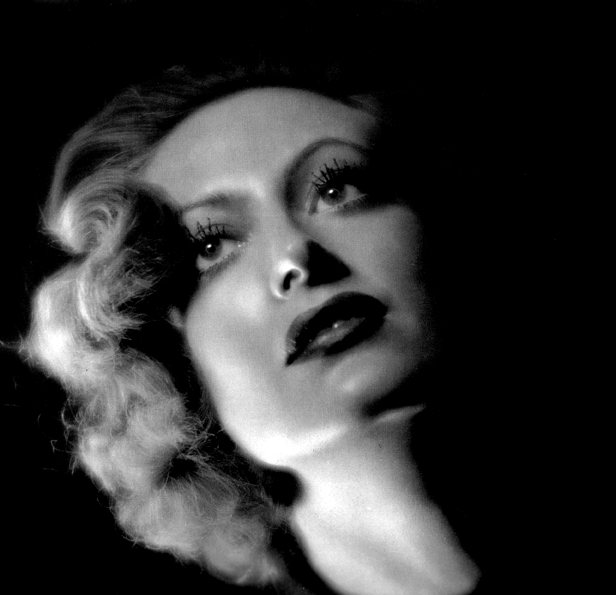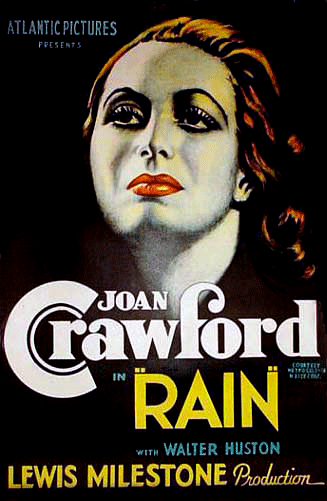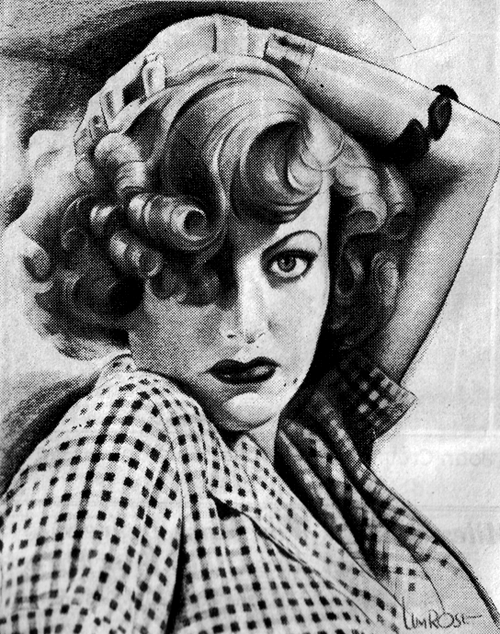|

"I hope they burn every print of this turkey that's in existence"
- Joan Crawford on the film "Rain."
"Rain" 1931
This page is dedicated to, Joan Crawford's grandson, Casey Lalonde.
Cast: Joan Crawford (as Sadie Thompson), Walter Huston, Fred Howard, Ben Hendricks Jr., William Gargan, Mary Shaw, Guy Kibbee,
Kendall Lee, Beulah Bondi, Matt Moore, Walter Catlett.
Release date - October 12, 1932
Running time - 85 or 92-93 minutes
Director - Lewis Milestone
Writing Credits - Maxwell Anderson (adaptation), John Colton (play), W. Somerset Maugham (for the story, Miss Thompson),
Clemence Randolph (play)
Producer - Jospeh M. Schenck (executive producer)
Cinematographer - Oliver T. Marsh
Studio - United Artists
Production Dates - Completed June 21, 1932

Movie Synopsis
Joan Crawford never realized how great her performance was in "Rain." The movie was practically ignored at the time
of its release in 1932 and so was the remarkable performance that Joan gave portraying Sadie Thompson.
Sadie Thompson was a girl from the wrong side of the tracks, cheap and easy, with a little mystery added to her as well.
The movie starts out with rain, lots of it, pouring down on the city of Pago Pago. From the first moment Sadie gets off the
train you can feel the raw performance that Crawford gives Sadie, Joan Crawford becomes Sadie Thompson. Sadie makes her grand
entrance eight minutes into the movie with too much makeup, skintight dress, costume jewelry and a cheap fox stole. The perfect
whore. Sadie shacks up at a local hotel with a bunch of army guys boozing and dancing it up but also staying at this hotel
is a group of missionaries with their strong religious beliefs. The leader of the missionary group, Walter Huston, gives an
exceptional performance as Mr. Davidson.
The missionaries to clean up her act hound Sadie or else she will be run off the island. Mr. Davidson sees to it that
she be banished and he succeeds. The most powerful scene in the film comes when Sadie is asked to beg for forgiveness from
Mr. Davidson. Sadie lashes out and shouts, "How do you know what I've suffered?" "Your God and I could never
be shipmates...you tell him Sadie Thompson is on her way to hell!" This scene alone should have earned Crawford an academy
award for her amazing performance. She does not blink an eye during this powerhouse scene. After this scene however, Sadie
does fall under the spell of the preacher and is stripped of her image. She appears on film fresh and raw in her looks. Sadie
is now without her armor and she shows her natural beauty. Crawford was at the height of her beauty at this stage in her life
and it really shows when she sheds the "costume" she is wearing. Mr. Davidson cannot resist Sadie and his lust for
her continues to grow and grow and Sadie gives in and abandons her awful ways and turns to God...turns to the preacher. But
Sadie finds out all men are alike and even the holier than thou Mr. Davidson cannot resist his passions and tries to seduce
Sadie. Sadie realizes that all men are the same and throws on her cheapness and washes her hands of God and picks up where
she left off.
"Rain" was WAY ahead of its time and it wasn't a major hit at the box office. Joan Crawford was taking a risk
at this point in her career and this pretty much halted Joan from taking any more risks while she was at MGM. One can wonder
what other meaty and powerful roles Joan would have gone after. Joan didn't sink her teeth into another risky role until 1939's
"The Women" when she was cast as the heartless bitch, Crystal Allen. Today, "Rain" is recognized as one
of the most important and amazing films of the 1930's. Joan based her films on fan acceptance and this film sent her into
depression when it was reviewed and ridiculed. She received hate mail from fallen fans and this sent Crawford over the edge.
Crawford was so affected by this and beat herself up so much that she shut down her Brentwood home and retreated to a cottage
in Malibu where she spent hours alone. She was also getting over her divorce to her first husband; Douglas Fairbanks Jr. Joan
took long walks on the beach to reflect and changed faith to Christian Science. It was at this time as well that Crawford
started to overcompensate for things in her life; from her career, her friends, how she dealt with rejection and disappointment.
Most of the time the results ended with her causing more harm or hurt then she realized. Regardless of the reviews and box
office receipts at the time, "Rain" has held up and stood the test of time. By far one of, if not the best performance
of Joan Crawford's career.

Interesting Trivia
A couple of blatant mistakes are visible in the final cut of Rain. Shadows of the camera's appear on the missionaries backs
as they sit around the table at the general store and the hairless character, Joe Horn (Guy Kibbee) has the constant reflection
of the studio lights reflecting on his bald head. This was the second remake of the same story. Rain was previously made as
Sadie Thompson (1928) and later remade as Dirty Gertie from Harlem U.S.A (1946) and Miss Sadie Thompson (1953). The negative
critical and public reviews of the film caused Joan to turn to Christian Science for solace.
The South Sea island scenes were filmed on Santa Catalina Island off the coast of Southern California. A news item in
Hollywood Reporter indicates that Ann Dvorak was once considered to play "Sadie Thompson." According to the file
on the film in the AMPAS Library, director Lewis Milestone recut the film after the world premiere in Los Angeles, removing
much scenery and dialogue footage and building up the roles of Mr. and Mrs. Davidson.
According to modern sources, Davidson was made a missionary in the film instead of a minister and his character was softened,
for fear of offending religious viewers. Although contemporary critics panned the movie and Crawford's acting, some modern
critics contend that this is the best version of the frequently filmed story.
The story was first filmed as "Sadie Thompson" by United Artists in 1928, starring and produced by Gloria Swanson
and directed by Raoul Walsh (AFI Catalog of Feature Films, 1921-30; F2.4757). Columbia's 1953 production Miss Sadie Thompson,
starring Rita Hayworth and Josť Ferrer and directed by Curtis Bernhardt was also based on the same source.
Joan and Douglas Fairbanks Jr. were having their first bout of marital troubles during the filming of Rain. Joan refused
to take any calls from her husband, so he decided to fly to their location on Catalina Island to talk with her in person.
His version of the story was that Joan was initially surprised to see him, they quarreled and caused a 'scene' and she then
suggested he leave. Joan also discovered she was pregnant during filming. She broke the normally happy occasion to her husband.by
telling him that she was pregnant, but she'd since lost the baby. Her version of events was that she'd slipped on the deck
of the ship while shooting a scene and it caused her to suffer a miscarriage.
Songs: "St. Louis Blues," words and music by W. C. Handy; "Baby Face," words and music by Harry Akst
and Benny Davis
Joan's salary: $4,000.00 per week
Box Office Receipts: $704,000.
Inflation Value in 2007: $10,684,202.04
Photos
Click on images below to see a larger view.
Movie Posters/Lobby Cards etc...

Fan Reviews/Comments
Reviewer, S.Mueller, says...
In this awkward early talkie, a beautiful, young Joan Crawford leaps off the screen with a vivid and charismatic performance
that anticipates her later award-winning
Try to see this on as big a viewing screen as you can, as the film is often quite dark, and Crawford is so beautiful in
it you'll want a good look. I loved it!
In this second screen version of W. Somerset Maugham's morality tale, "Rain", Joan Crawford gives a performance
that knocks the rest of the cast off the screen.
First made as a silent with Gloria Swanson, the stageplay "Miss Sadie Thompson" had been a controversial broadway
hit, and young Joan Crawford fought hard to get the coveted role of Sadie. She shed her drawing room manners and designer
gowns, researching the part by visiting the red-light district of San Diego to see what the street-walkers of the day looked
and sounded like. Her appearance in the film was considered offensive for it's realism, and the film stiffed at the box office.
Sadly, it's financial failure relegated Crawford to years of popular but light-weight "respectable" roles, before
her Oscar-calibre performances of the 1940's and 50's.
But for audiences of today, the film is worth reconsidering. The other performers are wooden and stilted but Crawford's
performance, embarrassingly natural in 1932, leaps off the screen. The topic matter that was so controversial, even offensive,
in the early 1930's is not a hard sell to modern audiences: that bible-thumpers aren't always the good guys, and "sinners"
aren't always so bad.
Further, the feminist aspect of the film is clearer today. As Sadie makes her way around the Pacific, a fun-loving free-spirit
often one step ahead of the law, it's the fact that she's a female that draws the ire of the puritanical fire-and-brimstone
missionaries: a young man would have gotten away with it.
And for us post-Woodstock viewers this touching story strikes a familiar chord: of the harmless, light-hearted kid who
hurts no-one but whose very existence is offensive to the powers that be.
And it must fairly be said that when she was a young (I think she's about 25 when she made this) she is a strikingly beautiful
babe, heavy make-up or not.
If you've ever written Crawford off as "man-ish" or "bitchy" because of roles she did later in her
life, check out this movie and take a look at the sexy, vivacious girl who was once described by F. Scott Fitzgerald as "the
personification of the American flapper"!
I found the film fascinating (that's why I went on to look up all the above information).

Reviewer, Danny, says...
Review: The first thing you notice in the credits is that Joan's name is above the title (by courtesy of MGM corporation).
Then that moody music score by Alfred Newman. Perfect beginning for a perfect movie!
Joan makes her grand entrance after eight minutes into the movie. She emerges from behind a beaded curtain, one limb at
a time, all tarted up in cheap costume jewelry, a cigarette dangling from her painted lips and a dead fox skin slung over
one shoulder. Sadie Thompson, the fabled whore with a heart of gold.
I have often noticed that this film is accused of being "stagey" and "static," but I've never found
that to be the case. It is very cinematic, and the camera moves fluently under Lewis Milestone's deft direction. And I like
the way he lets the RAIN play a role in the story.
Joan holds her own opposite an ensemble cast of established actors like Guy Kibee, Beulah Bondi, and Walter Huston as
the self-righteous reformer, Mr Davidson. The momentum she displays during the long takes and interminable dialog testifies
to her highly developed acting talent by 1932.
The simmering drama comes to a boil during the last confrontation scene between Sadie and Davidson, when he rejects her
plea for forgiveness and she goes into attack-mode, lashing out at his hypocrisy: "How do you know what I've suffered?
Your God and I could never be shipmates!" she shouts wild-eyed, until she finally surrenders to his influence by reciting
The Lord's Prayer with him. Look at her eyes! They don't blink for the entire scene!
Later, Sadie shifts gears. Soft-spoken and passive she appears ravishing under Davidson's spell. She is subdued and de-clawed
and she radiates a virginal glow as she yields to the Preacher's control.
But she soon discovers Davidson's fatal flaw when he proves he is just like any other man after he seduces her one night.
Sadie turns around again and puts her party dress back on, cocks her painted head back and cracks: "I'd race ya to
the beach if it wasn't for these pesky heels!" She is shocked, but not surprised, when she hears that Davidson committed
suicide after his sexual liaison with her. I always wonder if it was just a set up and she was just pretending to be reformed
in order to allure Davidson.
Either way, this movie works for me as a timeless allegory of the hypocrisy of the self-righteous, holier-than-thou religious
fanatics of today.
The last scene wraps up this classic with a perfect exchange between Mrs Davidson and Sadie. The preacher's wife tells
her, "I'm sorry for him and I'm sorry for you."
To which Sadie replies, "And I'm sorry for the whole world, I guess," then walks off into the sunset with her
soldier man.
Four Stars.
Reviewer, Dbgbear777 , says...
Comment: Id'nt come to love her Sadie Thompson. She is vibrant, beautiful, trashy, alluring, hard as nails, warm and above
all SEXY!! I also love Beulah Bondi and Guy Kibbee,and
the Big cigar smoking island mama wife of Mr. Horn, Ameena.
Four stars.
Reviewer, babyc22_5, says...
Comment: When I first saw this movie, I thought it's a bit weird, but as I watched again and again I understood the movie
more and more. I think that Joan played Sadie very well, but Gloria Swanson didn't like the idea of Joan playing her part
as she called it but I think Joan played it a lot more interesting than Gloria. All the cast where just as good as Joan. Walter
Huston was a great actor playing the preacher...
Four stars.
Reviewer, collegegirl5151974 , says...
Comment: I love when she first appears coming off the train with the cigarette dangling from her mouth and she says "Hey
boys."
Four stars.

Other Reviews
Abel Green of "Variety" had this to say, "It turns out to be a mistake to have assigned the Sadie Thompson
role to Miss Crawford. It shows her off unfavorably. The dramatic significance of it all is beyond her range...Joan Crawford's
get-up as the light lady is extremely bizarre."
Motion Picture Herald says: "Because the producers have made such a strong attempt to establish the stern impressiveness
of the story, it is rather slow. In its drive to become powerful, it appears to have lost the spark of spontaneity....Joan
Crawford and Walter Huston are satisfactory."
If you have seen this movie, please write a review below. Once your review is submitted, I will post the review below. Thank
you for your review on this film.
Click on the decades below to browse movies.
|

